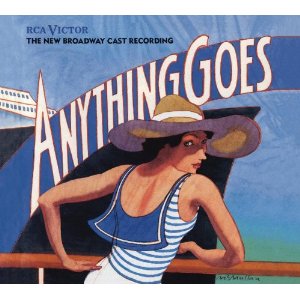SITE GUIDE
SEARCH
REVIEWS
REVIEW ARCHIVES
ADVERTISING AT CURTAINUP
FEATURES
NEWS
Etcetera and
Short Term Listings
LISTINGS
Broadway
Off-Broadway
NYC Restaurants
BOOKS and CDs
OTHER PLACES
Berkshires
London
California
New Jersey
DC
Philadelphia
Elsewhere
QUOTES
TKTS
PLAYWRIGHTS' ALBUMS
LETTERS TO EDITOR
FILM
LINKS
MISCELLANEOUS
Free Updates
Masthead
A CurtainUp Review
Failure: A Love Story
|
"
Just because something ends doesn't mean it isn't a great success.
"—John N. Fail, a foundling Lyric re: Johnny Weissmuller: If he should catch a cramp and drown I'd be the happiest man in town. — Mortimer Mortimer |

Left: Isa St. Clair, Right: Tabitha Allen
(Photo by Johanna Austin) |
It's announced early and often that the family's three sisters will all die within the year, and of what cause, and in what order. The technique of eliminating surprise, paired with the device of characters slipping out of the timeline to report on the story being illustrated, lends a once-removed quality. Add the frequent use of repetition, and the show has the feel of a macabre children's story.
Young Mortimer Mortimer, or Mort Mort, shows up at the clock shop to have a watch engraved with the name of whomever he will fall in love with. He falls in love and the deaths start happening. There are odd connections between the deaths, the Chicago River, and Lake Michigan. Is it a coincidence that the name "Morti-mer" means something like "dead sea"? Does this stranger have something to do with the girls' downward-spiraling karma? The question doesn't come up.
For a play that's called a love story, the depth of love shown provides little weight to support the hovering suggestion that while death happens, love is what ultimately matters. Mort Mort's (Kevin Meehan) serial love encompasses different types: First there's cute love with his "love at first sight" of sister Nelly (Mary Beth Shrader). Somewhat less smitten, she picks up on the opportunity he offers. When she's gone there's a brief, practical kind of love with sister Jenny June (Tabitha Allen). That's followed by a third, perhaps more promising love, at least on sister Gerty's (Isa St. Clair) part. Gone unnoticed, It's discovered too late.
Fates are recapped in long, amusing, rapid speeches (that can't be easy to deliver.) Yet among the funniest bits are the short deadpan responses of John N (Brendan Dalton), a reclusive foundling who becomes a brother to the young women.
The nicely appointed single set with lots of clocks and fairly steady light levels grounds the performance. Fabrics are wound into shapes representing various pets, some of which work better than others. The timing and variety of the sound design is impressive in this busy show, but the sporadic subdued singing to recorded music isn't nearly as robust or important as it might be.
From the start everyone's chipper, participating in the upbeat reenactment of the parents' deaths in a Desoto town car that went down in the water in 1915. But as the rest die one after the other (but remain in memory and on stage) spirits can start to sag. Little time is spent, however, dwelling on the profundities of life and death. A scene about a lost baby and one about euthanizing a pet dog come closest to representing grief, and elicit empathy.
Failure: A Love Story seems to be of several minds as to what it wants to get across. While a sweetness permeates the loss, nostalgia, and even the heedless comical brutality of the script, the story's point remains elusive. This may be an exercise in simultaneously reporting and acting, or it may be just unrelenting memento mori. It may be about the need to tell stories, as director Allison Heishman suggests.
Time, a big factor in the clock shop, is reflected in the set and sound design. But it's not clear what the play means to say about time. Can we presume that among the playwright's intentions is to contend that love or memories matter? But they're shown to be pretty useless along with everything else. There's scant comfort in memories: Bring on the next love. Love is something that happens and then ends. No happily ever after. Everyone dies.
This is a New Professionals Production that introduces new talent, and these actors have truly earned their applause at the end of the evening. The fast and challenging piece with clever turns of phrase and multiple activities demands that they be on their toes as they alternately describe events, participate, and die as announced and on schedule.
End note
BTW: A Desoto town car enters the story in 1915. But as any motorhead will cheerfully disclose, the Desoto didn't go into production until 1928. The mid-range make didn't offer a town car body style. This note isn't intended as nitpicking, but as a suggestion that careful playwriting requires fact checking when something is to figure prominently in a certain year.
Azuka is a member of the Off-Broad Street Consortium, which includes 11th Hour, Azuka, Brat, Egopo, Inis Hua, and Mauckingbird Theatre companies.
|
Failure: A Love Story
by Philip Dawkins
Directed by Allison Heishman Cast: Mary Beth Shrader, Tabitha Allen, Isa St. Clair, Brendan Dalton, Kevin Meehan Scenic Design: Lindsey Mayer Lighting Design: Robin Stamey Costume Design: Amanda Sharp Sound Design: Toby Petit May 8- 26, 2012 100 minutes with no intermission Reviewed by Kathryn Osenlund based on 005/09/13 performance. Off-Broad Street Theater, 1636 Sansom St, Philadelphia |
| REVIEW FEEDBACK Highlight one of the responses below and click "copy" or"CTRL+C"
Paste the highlighted text into the subject line (CTRL+ V): Feel free to add detailed comments in the body of the email. . .also the names and emails of any friends to whom you'd like us to forward a copy of this review. Visit Curtainup's Blog Annex For a feed to reviews and features as they are posted add http://curtainupnewlinks.blogspot.com to your reader Curtainup at Facebook . . . Curtainup at Twitter Subscribe to our FREE email updates: E-mail: esommer@curtainup.comesommer@curtainup.com put SUBSCRIBE CURTAINUP EMAIL UPDATE in the subject line and your full name and email address in the body of the message. If you can spare a minute, tell us how you came to CurtainUp and from what part of the country. |



 Anything Goes Cast Recording
Anything Goes Cast Recording Book of Mormon -CD
Book of Mormon -CD